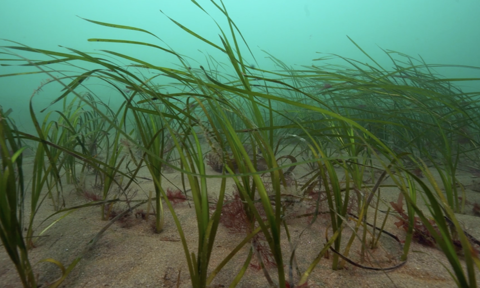A notice has been issued to boaters to avoid anchoring at Jennycliff where there are new seagrass beds.
Led by the Ocean Conservation Trust, the 'LIFE Recreation ReMEDIES' scheme has led to five new Special Areas of Conservations (SACs) with additional protection. This includes an area at the southern end of Jennycliff Bay.
In spring 2021, over 18,000 seagrass seeds were planted on the seabed at Jennycliff, aimed at restoring 4 hectares of lost seagrass within the Sound. This included over 2,000 seedlings grown in a lab before being transplanted, as well as 16,000 seeds. By June 2021, the seagrass will have began to germinate and stablise within the seabed.
LIFE Recreation ReMEDIES Project
(Reducing and Mitigating Erosion and Disturbance Impacts affecting the Seabed)
Seagrass has the potential to be a key tool in the fight against climate change. Much like rainforests and wetlands, seagrass absorbs huge amounts of carbon dioxide, and can even store it deep in their roots underneath the seabed.
Although seagrass can be grown all over the world, their ecosystem is declining rapidly due to poor conservation and management and is is now an EU Red Listed habitat. Fishing techniques, coastal development, poor sewage treatment and anchoring all contribute to declining seagrass.

Where to avoid anchoring
A Notice to Mariners has been issued by the QHM Plymouth stating that Jennycliff is a voluntary no-anchor zone.
Mariners are requested not to anchor, lay marks or pots at the southern part of Jennycliff bay within the orange area on the chart extract.
50° 20.760’N 004° 07.560’W

About the Ocean Conservation Trust
Based in Plymouth, the OCT is made up of marine scientists, researchers and educators with the sole purpose to driving towards a healthy Ocean. With a unique range of projects backed by a large education programme in partnership with the National Marine Aquarium.

